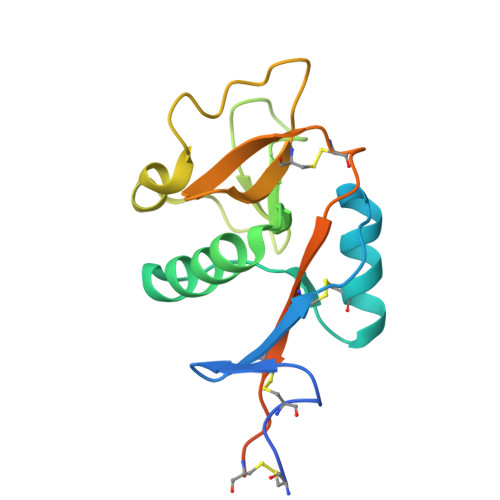Thermodynamics-Guided Design Reveals a Cooperative Hydrogen Bond in DC-SIGN-targeted Glycomimetics.
Nemli, D.D., Jiang, X., Jakob, R.P., Gloder, L.M., Schwardt, O., Rabbani, S., Maier, T., Ernst, B., Cramer, J.(2024) J Med Chem 67: 13813-13828
- PubMed: 38771131
- DOI: https://doi.org/10.1021/acs.jmedchem.4c00623
- Primary Citation of Related Structures:
9EMQ, 9EMR, 9EMS - PubMed Abstract:
Due to the shallow and hydrophilic binding sites of carbohydrate-binding proteins, the design of glycomimetics is often complicated by high desolvation costs as well as competition with solvent. Therefore, a careful optimization of interaction vectors and ligand properties is required in the design and optimization of glycomimetics. Here, we employ thermodynamics-guided design to optimize mannose-based glycomimetics targeting the human C-type lectin receptor dendritic cell-specific intercellular adhesion molecule 3 grabbing nonintegrin (DC-SIGN), a pathogenic host factor in viral infections. By exploring ligand rigidification and hydrogen bond engineering, a monovalent glycomimetic with an unprecedented affinity for DC-SIGN in the low μM range was discovered. A matched molecular pair analysis based on microcalorimetric data revealed a stereospecific hydrogen bond interaction with Glu358/Ser360 as the origin of this cooperative and enthalpically dominated interaction. This detailed insight into the binding mechanism paves the way for an improvement of monovalent glycomimetics targeting DC-SIGN.
- Institute for Pharmaceutical and Medicinal Chemistry, Heinrich-Heine-University Düsseldorf, Universitätsstraße 1, Düsseldorf 40225, Germany.
Organizational Affiliation:


















